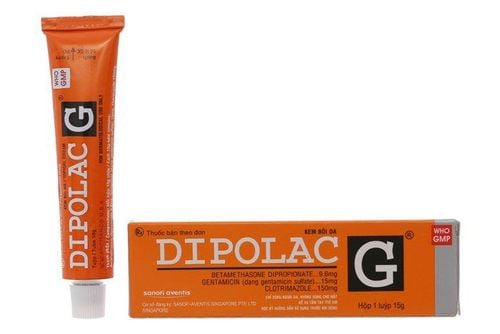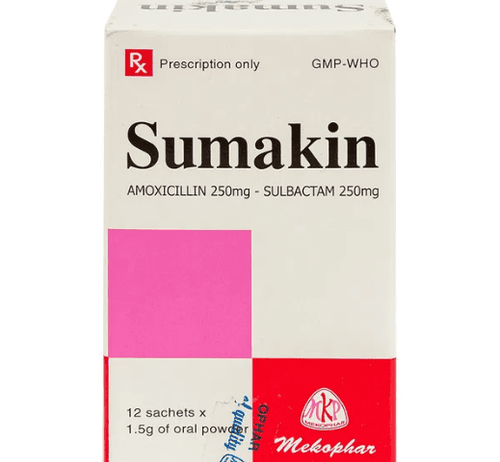This is an automatically translated article.
The article is professionally consulted by Master, Doctor Pham Lan Huong - Pediatrician - Pediatric Center - Vinmec Times City International HospitalStaphylococcus aureus is one of the most common bacteria that causes disease in humans. Among them, the rate of skin infections caused by staphylococcus aureus in children accounts for 70% and occurs in about 1/5 of pediatric patients who come to the hospital for examination. So what is a staph skin infection and how is it treated?
1. What is Staphylococcus aureus?
Staphylococci (Staphylococcus) include 3 common types: Staphylococcus aureus (Staphylococcus Aureus), skin staphylococcus (Staphylococcus Epidermidis) and saprophytic staphylococcus (Staphylococcus Saprophyticus).
Staphylococcus aureus can cause disease in many organs in the body. Bacteria, after penetrating or attacking through the outer skin barrier, cause staphylococcal skin infections containing lesions such as ulcers, skin burns. In addition, staphylococcus aureus is also the causative agent of pneumonia, sepsis, osteomyelitis, other tissues and even purulent meningitis.
The issue of special concern is that this bacteria is resistant to many current antibiotics. Staphylococcus aureus is ubiquitous in nature, including on the skin and mucous membranes of warm-blooded animals or the respiratory tracts of about 25 to 30% of the population. To make it easy to imagine, about 3 out of 10 healthy people carry staph bacteria on their bodies and most of them show signs of illness.
2. What is staphylococcal skin infection in children?
Staphylococcal skin infection is a common disease, most common in young children, in places on the body such as the face, hands or feet. Manifestations of the disease are varied with the following signs:
Skin boils or abscesses: This type of skin infection in children usually begins in the hair follicles or sebaceous glands. Symptoms of pediatric patients are usually the infected skin becomes red and swollen. The most common skin location is near the edge of the eyelid because children often rub their eyes with their hands and create favorable conditions for bacteria to spread; Impetigo: Usually presents as large blisters that may secrete fluid and develop honey-colored scales; Cellulitis: This infection occurs in the layers of tissue below the surface with redness and swelling, most commonly in the skin of the feet. If the infection is not controlled and widespread, the child may develop a high fever and lose weight; Staphylococcal burn syndrome: This disease is common in infants and children under 5 years of age. Symptoms include fever, rash, and blisters. When the blisters burst, the top layer of skin sloughs off, leaving the surface of the skin red and raw, like a burn. This disease affects the whole body of a child similar to a severe burn and needs to be treated in a hospital; Staphylococcal skin infections in children can cause skin symptoms such as blistering, abscesses, redness, impetigo, boils, and local swelling. Systemic symptoms are rare, but if the bacteria spreads widely and attacks the body, it can cause high fever, fatigue, headache, and poor appetite.

3. How to treat staph skin infections?
Treatment for staph skin infections depends on the severity of the injury and the child's overall health. Treatment measures include the use of topical bactericidal agents or prolonged intravenous systemic antibiotics.Treatment of mild staphylococcal skin infections in children with staphylococcus aureus by oral antibiotics is usually: penicillin group, especially penicillinase resistant type such as flucloxacillin.
Cefalexin and erythromycin are alternatives to penicillin with the advantages of saving treatment costs and being more effective due to their broad spectrum of action. However, the use of macrolide antibiotics such as erythromycin requires caution because of the development of bacterial strains resistant to many antibiotics.
Besides, the use of oral antibiotics to treat staphylococcal skin infections can be considered with other Cephalosporin antibiotics such as Cefadroxil and Cefprozil with the advantages of effectiveness, only need to be used once daily and the ability to better tolerability; or Azithromycin is preferred when taken only for a short time (3 days therapy). However, all of the above drugs have disadvantages that need to be studied carefully, which is expensive.
Although most antibiotics were taken orally for 10 days in clinical trials. However, there is currently no evidence that this duration is more effective than just 7 days of treatment.
For staphylococcal skin infections in children that are more severe and require intravenous treatment, the antibiotic Ceftriaxone has a great advantage over other drugs such as Ampicillin/Sulbactam and Cefuroxim because it can be used times/day.
Therefore, Ceftriaxone may be appropriate for outpatient treatment in pediatric patients with moderate to severe staphylococcal skin infections. Newer-generation Cephalosporins and Loracarbef are also effective with a broad spectrum of action but do not offer more prominent benefits and are significantly more expensive.
Childhood skin infections caused by methicillin-resistant Staphylococcus aureus (MRSA) are serious problems, but fortunately they are still relatively rare in this population. Healthy pediatric patients with community-acquired MRSA infection can be treated with the antibiotics clindamycin or trimethoprim-Sulfamethoxazole (Cotrimoxazol) but must have a plan to closely monitor for possible serious side effects.
In severe methicillin-resistant staphylococcal skin infections, vancomycin remains the preferred choice, while teicoplanin and clindamycin are appropriate alternatives. In addition, Linezolid and Quinupristin/Dalfopristin now show promise in the treatment of pediatric multidrug-resistant Gram-positive skin infections.
Besides choosing the right antibiotic, several other supportive measures are equally important, including excision, removal of infected tissue, drainage of the obstructed infection, and cleaning. clean wound.
4. Prevention of children's skin infections caused by staphylococcus
Effective measures to prevent the spread of staph is good personal hygiene by bathing children daily with clean water, especially babies with many interstitial folds and folds containing sweat and sebum. greasy.
At the same time, adults or parents should also wash their hands thoroughly every time they have direct contact with children. In addition, parents and children should limit contact with surfaces that are used by many people such as handrails, faucets or doorknobs, especially in public places.

Wash hands with soap before eating and after using the toilet; Protect skin scratches, do not arbitrarily use antibiotics or topical drugs, apply tobacco leaves and absolutely do not scratch the infected skin...; Thoroughly treat skin diseases to avoid staphylococci from entering; Visit a doctor for a diagnosis and appropriate treatment; Do not share personal items (such as towels, clothes...) with people infected with Staphylococcus aureus. Staphylococcus aureus is one of the most common bacteria that cause disease in humans. Accordingly, the rate of skin infections in children caused by staphylococcus aureus accounts for a large part in hospitals. To avoid danger to children, parents need to pay attention to the symptoms and take preventive measures to protect the health of their children.
With many years of experience in examining and treating diseases in children, now the Pediatrics Department at Vinmec International General Hospital has become one of the major health care centers, capable of examining , screening and treatment of many specialized diseases in children. Therefore, if the child has health problems, parents can take the child to Vinmec International General Hospital for examination and receive support and advice from doctors and nutritionists.
Please dial HOTLINE for more information or register for an appointment HERE. Download MyVinmec app to make appointments faster and to manage your bookings easily.














